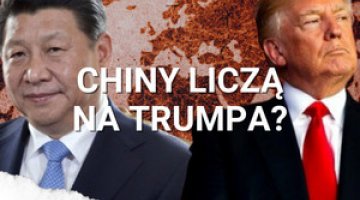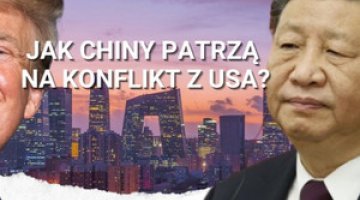China: anti-corruption campaign in the People’s Liberation Army
An anti-corruption campaign has been underway in the People’s Liberation Army (PLA) since the middle of last year, which is now effectively amounting to a political purge. However, little information about it has been revealed to the public, and most media reports on the matter have relied on guesswork and speculation. In the light of Chinese reality, it could take years before we can discern how things have actually unfolded.
The first publicly known signal that Xi Jinping had embarked on another anti-corruption campaign in the armed forces came in July 2023, when the Central Military Commission (CMC) announced a new mechanism for detecting and preventing corruption (for more details, see Appendix). It is based on an algorithm that checks the income, assets and decisions of top officers. A few days later, the CMC’s Department of Equipment Development (DED) launched a retrospective investigation into allegations of corruption. This case also implicated Li Shangfu, a former DED director who was serving as China’s defence minister at that time. The statement said that the DED had been investigating offences such as ‘information leaks’ and assistance provided to some companies to help them win tenders. Li Shangfu disappeared from public life in late August 2023; on 24 October, the state-run media reported that the Standing Committee of the National People’s Congress (SC NPC) had dismissed him as minister. The post remained vacant for two months until 29 December, when Dong Jun was nominated as his successor.
Commentary
- At present, it is impossible to say conclusively whether the purge will have any significant impact on the modernisation of the PLA or its readiness for combat. There have been numerous personnel changes in command positions in the Chinese armed forces in recent months. Unlike the regime’s other branches, the PLA has not made its corruption investigations public. Therefore, we do not know either the actual extent of the ongoing investigations or how many officers have actually been purged. The government has only reported personnel changes in high-profile positions, although even in such cases ‘quiet’ departures have occasionally happened: for example, last November, the Caixin website reported that a major general of the Rocket Force had been removed from the Beijing municipal legislature. Those who have been dismissed include figures responsible for the PLA’s modernisation, such as Ding Laihang, a retired Air Force commander who had pushed for more realistic pilot training, and Ju Xinchun, one of the Navy’s top commanders, who was previously deputy chief of the South Sea Fleet, which is responsible for the crucial South China Sea area. More recently Ju Xinchun had served as commander of the PLA’s entire southern operational theatre, and had earlier headed the Fleet’s equipment department. However, we cannot conclude that these changes have had a negative impact on the current functioning of the individual branches of the Chinese armed forces.
- US media reports about instances of corruption affecting the technical condition of the Rocket Force do not seem credible. On 6 January, Bloomberg reported on Xi Jinping’s alleged reasons for launching his anti-corruption campaign claiming, for example, that he had learned about long-range missiles having been filled with water instead of fuel (for years, Chinese missiles have been using solid rather than liquid fuel). There have also been reports of vast fields of silos in the western part of China which have covers operating in a way that makes it impossible to launch missiles effectively; many such facilities are known to be dummies designed to disperse the force of a possible strategic strike by an adversary. Moreover, there are no reliable accounts of the tensions within the CCP’s Central Committee over the situation in the armed forces, or of any impact these frictions may have had on the exceptionally long vacancy for the post of defence minister, which was unprecedented in China. Nevertheless, we have to assume that the current state of affairs has translated into factional struggles within Xi Jinping’s inner circle in some way, although it has not affected his control of the party-state apparatus.
- In the long term, the anti-corruption campaign may even boost the PLA’s capabilities. Indeed, the CCP leadership launched it after concluding that widespread corruption had undermined the warfare capabilities of the Armed Forces of the Russian Federation following their invasion of Ukraine in February 2022. Since Xi Jinping came to power in 2012, China has committed substantial resources to the PLA’s modernisation with the aim of transforming it into a modern fighting force by 2027, when (according to US intelligence) it is supposed to be ready to launch a possible large-scale military operation on Xi Jinping’s orders. The modernisation and expansion of the Rocket Force is of utmost importance as it would play a key role in any invasion of Taiwan and any clash with the US, in the areas of both conventional warfare and strategic deterrence. In recent months the PLA has conducted increasingly complex exercises (such as combined air and naval drills) which also shows that its drive to modernisation has been making progress, despite some shortcomings.
- Corruption in the PLA and across China’s defence industrial base is widespread, but we should not expect the ongoing campaign to have any significant impact on the planning of possible military operations in the coming years. In the Chinese situation, corruption takes a different form than in other countries: it increases costs but simplifies many processes, while the system largely offsets the losses it incurs because of it. Therefore, we should assume that the CCP’s leadership is aware of the problem, but at the same time it takes the existing conditions into account in its planning in such a way as to ensure that corruption does not become an obstacle to achieving its goals.
- Xi Jinping is not losing control of the military. His ability to carry out such a wide-ranging replacement of military personnel proves that his authority over the PLA, which he gained during the first purge in 2013–15, has not been eroded. The fact that Xi had previously promoted some of the same military officers who have now been purged may undermine his position – but only if he fails to improve the situation in the PLA over the long term. The current purge is not a mass-scale operation, but is rather more surgical in nature. Xi Jinping has already employed anti-corruption repression in the past as a method of consolidating his power and ensuring that the apparatus is committed to his policies. However, following the current campaign, the military may place an even stronger emphasis on ‘political credibility’ within its ranks in the coming years and ramp up the political training of its personnel. This already takes up around 20 percent of soldiers’ time on active duty, so increasing it may have a negative impact on the military’s competence in the long run. Nonetheless, in the short to medium term China will likely strive to ensure that its actions vis-à-vis Taiwan and the US remain below the threshold of war; however, this will be driven by the 2027 timetable for the PLA’s modernisation, rather than the current situation in the military.
APPENDIX
What do we know about the purge in the PLA?
In recent months, the anti-corruption campaign has affected arms manufacturers, command positions (particularly in the Rocket Force) and individuals responsible for the procurement of weapons, among others. On 22 October, the Chinese People’s Political Consultative Conference (CPPCC), an advisory body, removed three defence industry executives, including the presidents of China North Industries, a weapons manufacturer known as Norinco, and China Aerospace Science and Technology, a company that makes space vehicles and strategic missiles. On 29 December, the SC NPC announced that it had appointed Dong Jun as defence minister. At the same meeting, nine military officers lost their seats on the NPC: Li Yuchao, former commander of the PLA Rocket Force; Zhou Yaning, who was Li Yuchao’s predecessor as commander of the Rocket Force; Li Chuanguang, deputy commander of the Rocket Force; Zhang Zhenzhong, who was Li Yuchao’s former deputy as commander of the Rocket Force; Lu Hong, head of the Rocket Force’s equipment development; Zhang Yulin, former deputy director of the General Armament Department (now the CMC’s DED); Rao Wenmin, deputy director of the DED; Ding Laihang, former commander of the PLA Air Force; and Ju Xinchun, commander of the PLA’s Southern Theatre Command. On 30 January, the CPPCC dismissed Wang Xiaojun, previously chief commander of the Long March 7 rocket programme for space missions and most recently president of the China Academy of Launch Vehicle Technology (in China, the space programme falls under the PLA’s Strategic Support Force). In early February, there were reports that more people had been removed from their posts, including at least three generals and six managers from arms manufacturers.
The Chinese government has not given any reasons for the dismissals of these individuals from their high-profile posts, nor has it disclosed any investigations into them. Moreover, the only source of knowledge about changes in some PLA positions comes from reports that new people have been appointed to replace their predecessors. All the officers removed owed their careers to Xi Jinping, and had been installed after 2015. While there have been no indications of any mass-scale purges in the lower-level officer corps, we cannot rule out an extension of the ongoing campaign to this level in the future.
In an editorial on 1 January, China’s official military newspaper announced that the ‘war on corruption’ would continue this year.




